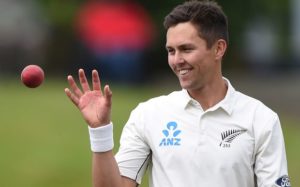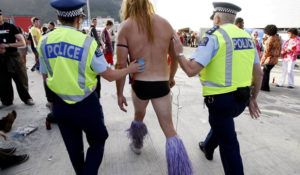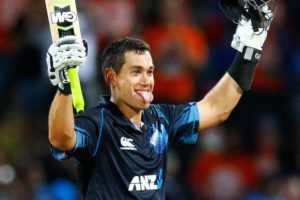
The Black Caps, the Tigers, and cricket fans will all be on the same side for the Second Test, their adversary: the Christchurch weather. It is forecast to rain on at least three of the five days of the Test, and anyone who has lived in the Garden City knows that this could mean anything from five days of blazing sun to five days of hammering down.
BetFair doesn’t seem too concerned about the possibility of the Draw, though. At time of writing this was paying $6.60.
On the face of it, this looks very high when you consider that the first two innings of the First Test went for over 1,100 runs for only 18 wickets. In fact, at Tea on the fourth day, the Draw was paying a mere $1.05, and the majority of cricket fans were astonished by how rapidly the second Bangladeshi innings fell apart from that point.
Probably the market is anticipating that Bangladesh will have difficulty replicating their batting feats of the first innings in Wellington – after all, Bangladeshi batsmen cannot break the record for their nation’s highest ever Test score every match, as Shakib al Hasan did with his superb 217 from 276 balls.
The Black Caps are paying $1.26, which is very marginal value at best.
Although they showed in Wellington that any of Tom Latham, Kane Williamson or Ross Taylor can play a matchwinning innings, it’s doubtful whether the Black Caps have the firepower with the ball to justify accepting a margin of twenty-six cents in the dollar.
The Black Caps bowlers may have knocked the Tigers out for 160 in their second innings, but aside from skilled bowling from Mitchell Santner, and Neil Wagner setting up Mominul Haque, this was mostly due to poor shot selection and being injured by the ball.
Certainly there is motivation for Tim Southee to bowl well in Christchurch because his claim to a spot in the team is arguably more tenuous than anyone else beside Henry Nicholls.
With match figures of 3 for 192 in Wellington, and with an average of 36 at a strike rate of 70 since the start of 2015, he will have to improve to keep the next generation of strike bowlers from replacing him in the first choice side.
Bangladesh are paying $16.50 at time of writing, which appears good value but not as good as the Draw. They were paying $24 before the First Test so the market has taken account of how impressive they were.
Taskin Ahmed was impressive without reward with the new ball on debut, suggesting that much of his promise in the shorter forms will carry over to Tests once he makes the adjustment. He may have only got one wicket but it was Williamson with a delivery of excellent line and length, and if a bowler can dismiss Williamson he can dismiss anyone.
Subashis Roy, the other debutant, did not have an action that suggested he would be dangerous but he did pick up 3 for 121, very good figures in the context of a defeat of this magnitude.
The main difficulty for Bangladesh is that – although Mominul Haque and al Hasan are a match for the Black Caps bowlers with the bat – Williamson, Taylor and arguably even Latham and BJ Watling outclass with the bat anything the Tigers can put forward with the ball.
So – as was amply demonstrated in Wellington – the Tigers may have the potential to put up a huge innings on occasion but probably lack the firepower to break the Black Caps defences twice themselves.
Certainly with regular captain Mushfiqur Rahim out injured for the second Test, the Bangladeshi men of silver will be having nightmares about how to get Kane Williamson out twice. Williamson was dismissed once in Wellington for the McCullumesque match return of 157 runs from 145 balls.
Considering that there are very few match outcomes that could result in the Black Caps being shorter than $1.26 at the end of the first day, the optimal betting strategy might be to lay the Black Caps before the start of play. In doing so, you will be in a position to cash in on both the possibility of rain and of a large first innings from Bangladesh.
This bet will very likely have value until at least late in the fourth day, given the fact that the batsmen in both teams are collectively more skilled than the bowlers in both teams.
The trader may also wish to consider that in the previous Test at this venue, the Black Caps lost Latham, Williamson and Taylor for a total of 16 runs in the first innings – and still won by eight wickets. So if the rain does not play a role there may well be a result.



